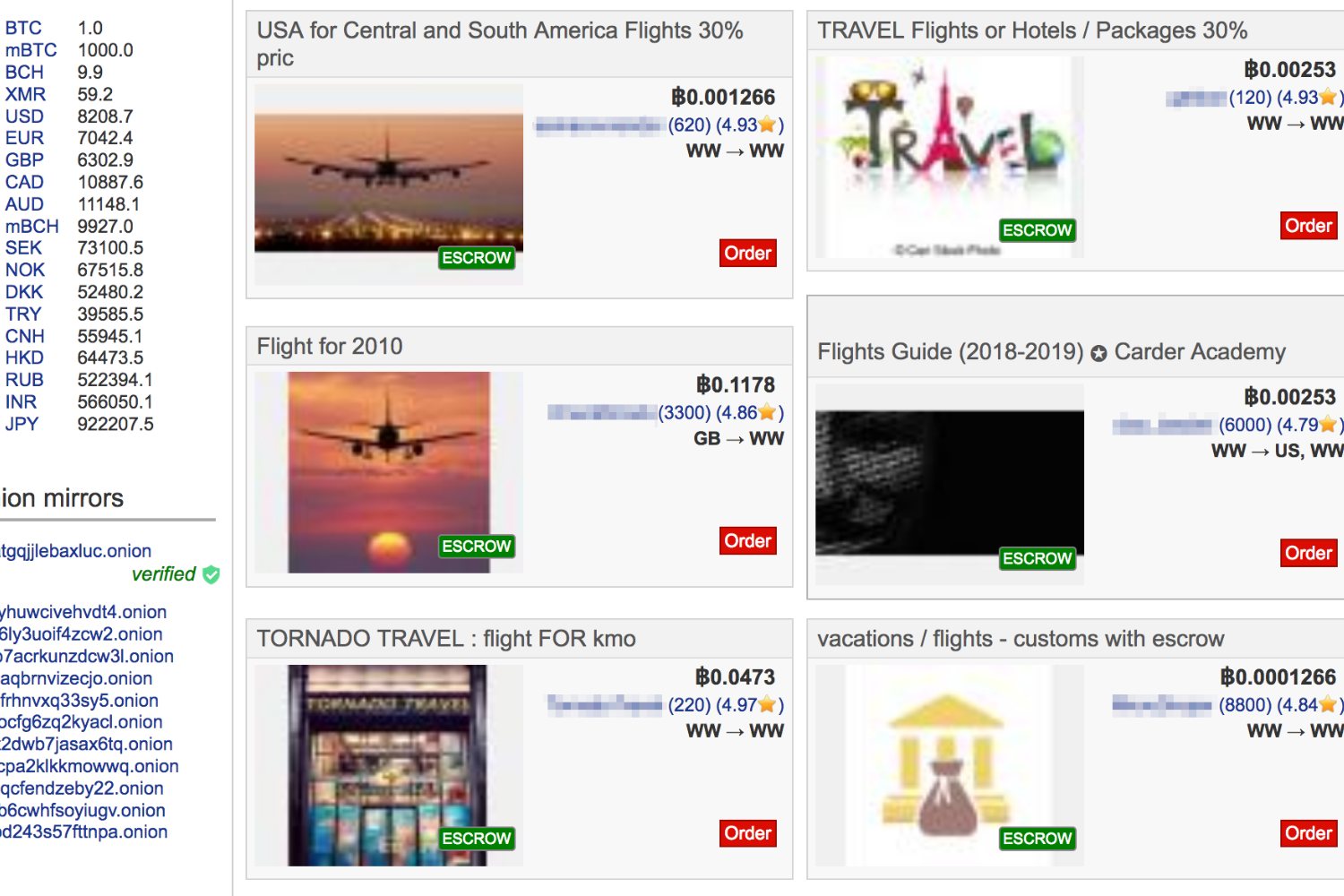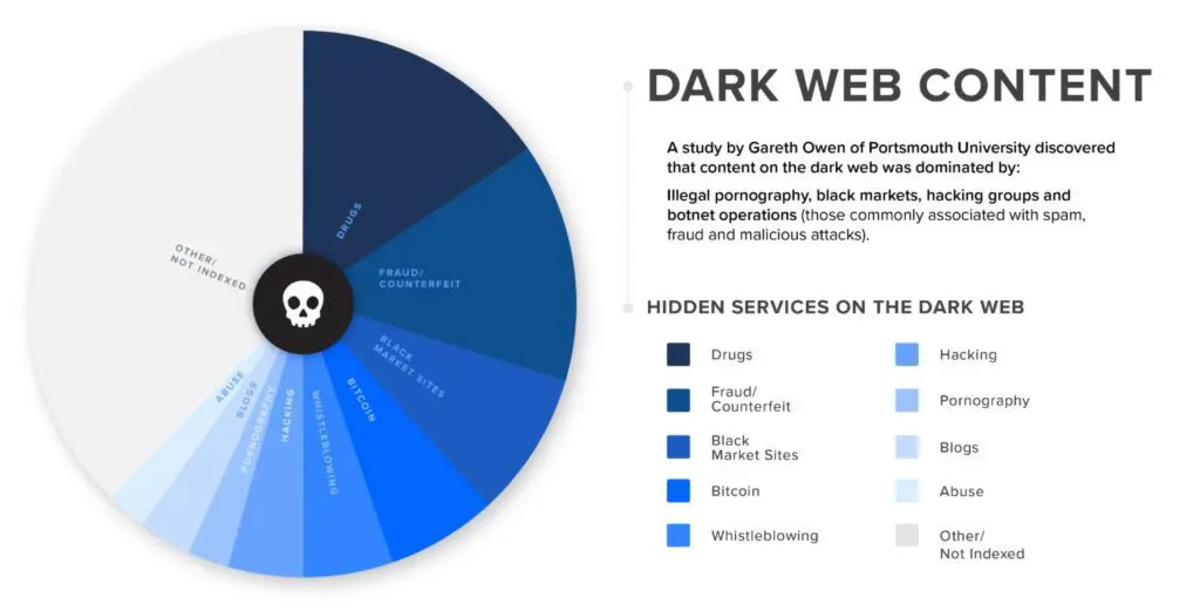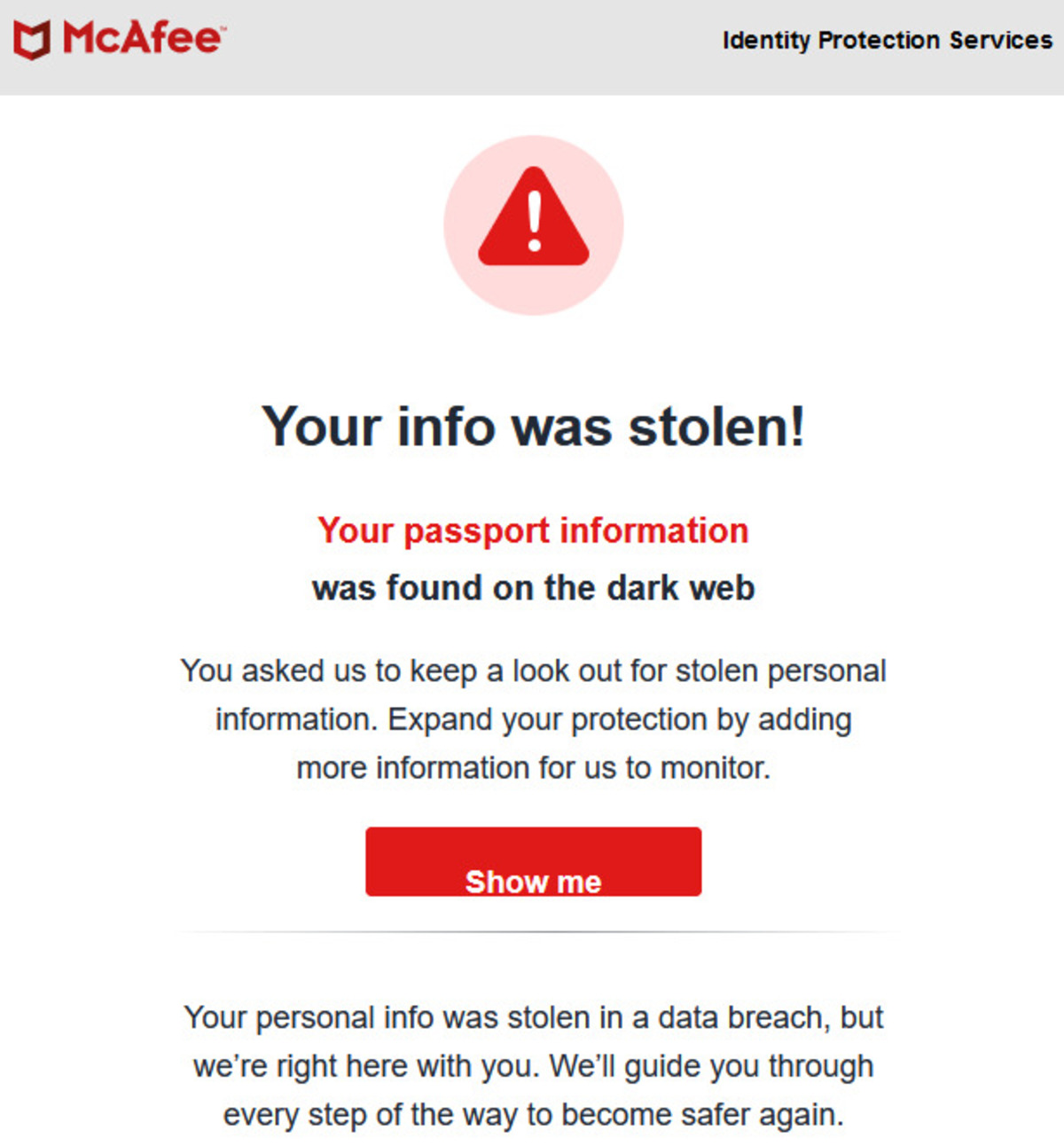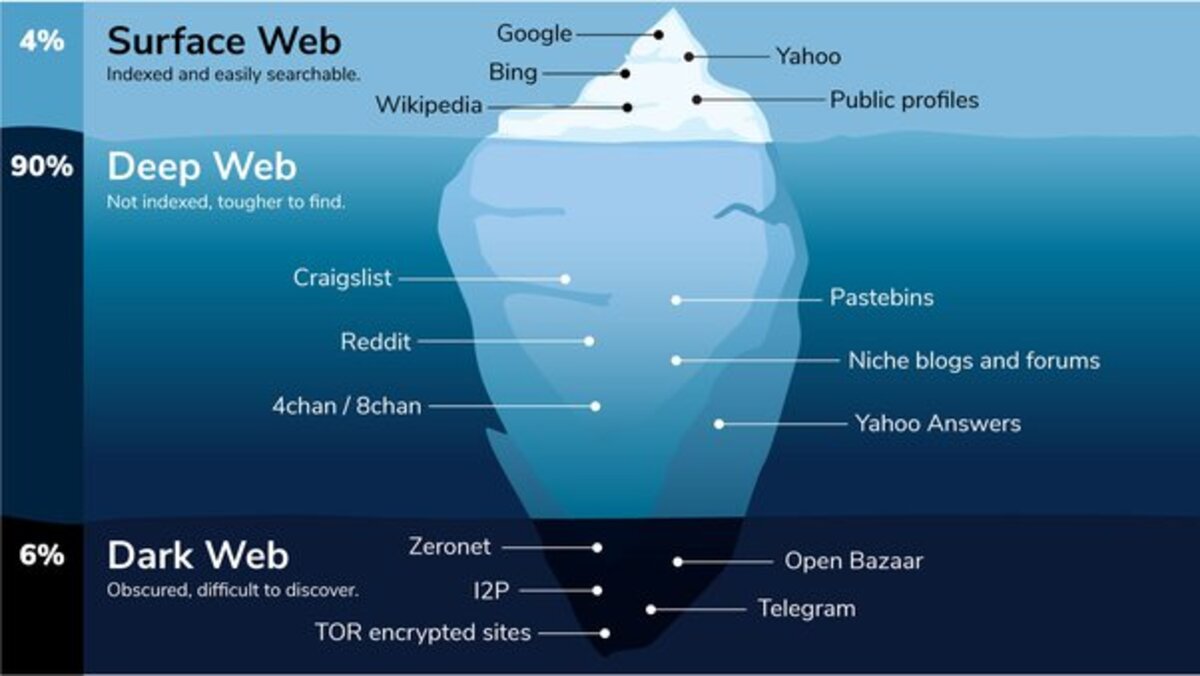Introduction
Are you looking to explore the hidden corners of the internet and embark on a thrilling and potentially lucrative journey? Welcome to the world of the dark web, a mysterious and enigmatic realm where anonymity reigns supreme and illicit activities thrive. In this article, we will guide you through the process of selling on the dark web and share some tips and precautions to ensure a successful and secure experience.
Before diving into the world of dark web marketplaces, it’s important to have a basic understanding of what the dark web is. Unlike the surface web, which is accessible to everyone through search engines, the dark web is a hidden network that requires specialized software, such as Tor, to access. This encrypted network grants users anonymity by bouncing their internet traffic through multiple nodes, making it almost impossible to trace their activity back to them.
Setting up anonymity is the first essential step to ensure a safe and secure presence on the dark web. It is imperative to create a new identity separate from your real-life persona. This includes using a pseudonym and reliable VPN services to mask your IP address and encrypt your internet connection. By taking these precautions, you can protect your identity and reduce the risk of being tracked by law enforcement or malicious actors.
Choosing the right marketplace is crucial to the success of your dark web journey. Look for reputable and established platforms that have a strong user base and positive reviews. A reliable marketplace will ensure a smooth transaction experience, provide escrow services to protect buyers and sellers, and enforce certain rules to maintain trust among users.
Once you have set up a secure identity and chosen a marketplace, it’s time to source products to sell. The dark web offers a wide range of goods, both legal and illegal. However, it’s essential to adhere to ethical and legal boundaries. Research and understand the marketplace’s policies and restrictions to avoid selling prohibited items.
When it comes to packaging and shipping, attention to detail is crucial. Discreet packaging is a must to avoid raising suspicion during shipping. Consider using anonymous shipping services that don’t require revealing your personal information. Additionally, make sure to use reliable courier services to ensure timely and secure delivery.
Pricing your products accurately is key to attracting potential buyers and maximizing profits. Research the market to understand the average prices for similar products and set prices that are competitive yet profitable for you. Offering discounts or bundle deals can also be an effective strategy to entice customers.
Handling transactions securely is of utmost importance when selling on the dark web. Utilize the escrow services provided by the marketplace to ensure that both parties fulfill their obligations. This way, payment is only released once the buyer receives the product and confirms their satisfaction.
Building trust and reputation is a long-term investment in the dark web marketplace. Provide excellent customer service, maintain open communication, and promptly resolve any issues that may arise. Positive feedback from satisfied customers will help establish your credibility and attract a larger customer base.
Finally, it is essential to be cautious and vigilant in your dealings on the dark web. Stay informed about potential scams, phishing attempts, and the latest methods used by law enforcement agencies to track down illegal activities. Regularly review the marketplace’s guidelines and stay updated on any changes or new security measures.
Selling on the dark web can be a unique and profitable venture, but it requires careful consideration and adherence to ethical boundaries. By following the guidelines we’ve outlined here, you can navigate this hidden realm with confidence and potentially find success in your dark web selling endeavors.
Understanding the Dark Web
The dark web, often portrayed as a mysterious and dangerous place, is a hidden network within the depths of the internet. Unlike the surface web we’re familiar with, which is easily accessible through search engines, the dark web requires specialized software like Tor to navigate its encrypted pathways.
While the dark web is often associated with illicit activities, not everything found in this clandestine realm is illegal. In fact, the dark web serves as a platform for activists, whistleblowers, and individuals seeking privacy in countries with oppressive regimes.
One of the primary features that sets the dark web apart is its emphasis on anonymity. Users on the dark web can conceal their identities by communicating through encrypted channels, making it difficult for their real-life information to be traced back to them. This anonymity provides protection for individuals who require privacy for legitimate reasons.
The dark web is home to various marketplaces where users can buy and sell a wide range of goods and services. While some of these marketplaces sell illegal items like drugs, weapons, or stolen data, there are also legitimate marketplaces where users can find unique products, digital services, or even rare books and collectibles.
Regarding the infrastructure of the dark web, it operates on hidden networks or darknets. These networks use non-standard protocols and require specific software to access. The most well-known darknet is Tor (The Onion Router), an anonymizing network that hides the user’s IP address by routing their internet traffic through multiple layers of encryption.
It’s important to note that accessing the dark web carries both risks and responsibilities. While anonymity can offer protection, it also attracts cybercriminals who exploit this veil of secrecy for malicious purposes. Users must exercise caution and practice good cybersecurity hygiene to ensure their safety while navigating this hidden realm.
Law enforcement agencies worldwide closely monitor the dark web and take action against illegal activities that take place within it. Cybersecurity experts work tirelessly to uncover and expose illegal marketplaces, helping maintain a balance between privacy and security.
Understanding the complexities of the dark web is essential for anyone looking to explore or engage with it. By being aware of the risks, respecting legal boundaries, and utilizing the appropriate security measures, individuals can navigate the dark web responsibly and make informed decisions about their online activities.
Setting Up Anonymity
When venturing into the world of the dark web, maintaining anonymity is paramount. By taking the necessary precautions, you can protect your identity and reduce the risk of being tracked by law enforcement or other malicious actors. Here are some steps to set up anonymity:
1. Pseudonym: Start by creating a new online persona or pseudonym specifically for your dark web activities. Avoid using any identifying information or details that could be traced back to your real-life identity.
2. VPN: Utilize a reliable Virtual Private Network (VPN) to mask your IP address and encrypt your internet connection. A VPN will route your internet traffic through secure servers, making it difficult for others to track your online activity.
3. Tor Browser: Install the Tor browser, a free and open-source software that allows you to access the dark web. Tor encrypts your internet traffic and routes it through a network of volunteer-operated servers, making it extremely difficult to trace your online activities.
4. Secure Operating System: Consider using a secure operating system like Tails or Whonix. These operating systems are specifically designed to enhance privacy and security, providing an additional layer of protection against malicious attacks.
5. Secure Communication: When communicating on the dark web, ensure your messages are encrypted. Platforms like PGP (Pretty Good Privacy) offer end-to-end encryption, ensuring that only the intended recipient can decrypt and read your messages.
6. Minimize Personal Information: Avoid sharing personal information on the dark web. Limit the details you provide in your profile or any other communication to minimize the chances of your identity being compromised.
7. Use Bitcoin or Cryptocurrencies: Conduct financial transactions using cryptocurrencies like Bitcoin, which provide an added layer of anonymity. Bitcoin transactions are decentralized and difficult to trace back to individuals, ensuring your financial privacy.
8. Public Wi-Fi: Consider using public Wi-Fi networks when accessing the dark web to further obfuscate your location. However, exercise caution and be aware of potential security risks associated with public networks.
9. Regularly Update Software: Keep your software, including your operating system, browsers, and security tools, up to date. Regular updates often include security patches that protect against emerging threats.
10. Avoid Clicking Suspicious Links: Be cautious when clicking on links or downloading files from the dark web. Malicious links can compromise your anonymity, so only access trusted sources and use common sense when navigating the dark web.
By following these steps and staying vigilant, you can set up a strong foundation of anonymity as you embark on your dark web journey. Remember, anonymity is an ongoing process, and it requires constant attention and adherence to best practices to ensure your online safety and privacy.
Choosing the Right Marketplace
When it comes to selling on the dark web, choosing the right marketplace is crucial to your success. With numerous options available, it’s important to select a platform that aligns with your goals, offers a secure environment, and provides a positive experience for buyers and sellers. Here are some key factors to consider when choosing a dark web marketplace:
1. Reputation and User Reviews: Research the marketplace’s reputation and read user reviews. Look for platforms that have a solid track record of providing reliable services, protecting user information, and maintaining a fair and trustworthy environment. Feedback from other sellers and buyers can offer valuable insights into the marketplace’s reliability and safety.
2. Security Features: Ensure that the marketplace has robust security features in place. Look for platforms that offer two-factor authentication (2FA), encryption, and other security measures to protect your personal information and transactions. A secure marketplace will prioritize the safety of its users and provide the necessary tools to prevent hacking or fraud.
3. Escrow Services: Escrow services are essential on dark web marketplaces. These services hold funds in a secure account until both the buyer and seller have fulfilled their obligations. This ensures that payment is released only when the buyer receives the product and confirms their satisfaction. It adds an extra layer of trust and protection for both parties involved in the transaction.
4. Dispute Resolution: Consider how the marketplace handles disputes between buyers and sellers. Look for platforms that have a fair and efficient dispute resolution process in place. Having a reliable system to handle conflicts can prevent misunderstandings and ensure a smooth transaction experience.
5. Product Selection: Assess the variety and quality of products available on the marketplace. A diverse range of products can attract a larger customer base, increasing your chances of making sales. Additionally, opt for a marketplace that allows you to showcase your products effectively through detailed descriptions and images.
6. Fees and Commissions: Understand the fees and commissions charged by the marketplace. Consider the impact these costs will have on your profitability and compare them with other platforms. Some marketplaces may charge higher fees but provide better features or a larger user base, so make sure to evaluate the value you’re getting in return.
7. User Experience: Evaluate the user experience offered by the marketplace. Is the interface intuitive and easy to navigate? Does it provide useful tools and features to manage your listings? A user-friendly platform enhances your selling experience and makes it easier to attract customers and manage your operations.
8. Policy and Prohibited Items: Familiarize yourself with the marketplace’s policies and guidelines. Ensure that the platform aligns with your ethical boundaries and the products you intend to sell. Some marketplaces have strict rules against certain items, so make sure you abide by these regulations to avoid any account suspension or legal issues.
By taking the time to research and evaluate the different marketplace options, you can select the platform that best suits your needs and priorities. Remember, choosing the right marketplace is a crucial step towards a successful and secure selling experience on the dark web.
Finding Products to Sell
One of the key factors for a successful selling venture on the dark web is sourcing the right products. The dark web offers a wide range of goods, legal and illegal, catering to various interests and needs. Here are some strategies for finding products to sell on the dark web:
1. Research Market Demand: Start by researching market demand on the dark web. Look for popular categories and trending items that are in high demand. This will give you insights into what users are actively seeking and increase your chances of making sales.
2. Participate in Forums and Communities: Engage with dark web forums and communities where users discuss their interests and needs. This can provide valuable insights into niche markets and specific items that are in demand. Actively participating in these communities can help you identify potential customers and gather product ideas.
3. Follow Market Trends: Stay up to date with the latest market trends and emerging product categories. Trends can shift quickly on the dark web, so monitoring changes and adapting your offerings accordingly can increase your chances of success. Keep an eye on popular forums, news sources, and social media channels to identify new opportunities.
4. Unique Digital Products or Services: Consider offering unique digital products or services that are in demand. This could include software, ebooks, online courses, or digital art. Digital products are often easier to distribute, require minimal shipping logistics, and can result in higher profit margins.
5. Legal and Ethical Considerations: Adhere to ethical and legal standards when choosing products to sell. Understand the marketplace’s policies and restrictions and ensure that the items you offer are within the legal boundaries. Selling illegal products can lead to serious consequences and compromise your safety.
6. Diversify Your Product Range: Offer a diverse range of products to attract a wider customer base. By diversifying your offerings, you can cater to different interests and preferences. Consider offering a mix of high-demand items and niche products to capture a broader market segment.
7. Quality and Authenticity: Focus on offering high-quality products and ensure their authenticity. In a competitive marketplace, building a reputation for reliability and genuine products can help you gain customer trust and differentiate yourself from competitors. Be transparent about the quality, specifications, and any warranties associated with the products you sell.
8. Establish Supplier Relationships: Build relationships with reliable suppliers or manufacturers to secure a steady supply of products. Establishing a direct line of communication with suppliers can help you negotiate better prices, ensure product availability, and maintain a consistent inventory.
9. Follow Marketplace Guidelines: Familiarize yourself with the marketplace’s guidelines regarding product listings and descriptions. Ensure that you provide accurate and detailed information about your products, including images, specifications, and any other relevant details. Comply with the marketplace’s policies to avoid any account suspensions or legal issues.
10. Monitor Competitors: Keep an eye on your competitors’ offerings and pricing strategies. This will help you stay informed about market trends, identify gaps in the market, and adjust your pricing and product selection accordingly.
By following these strategies and conducting thorough research, you can find products that align with the market demand on the dark web. Remember to stay within legal and ethical boundaries, prioritize quality and authenticity, and adapt your offerings based on evolving market trends.
Packaging and Shipping
When selling on the dark web, ensuring secure and discreet packaging is crucial to protect your customers’ anonymity and maintain your reputation as a seller. Additionally, efficient shipping methods are essential to deliver products in a timely and reliable manner. Here are some key considerations for packaging and shipping on the dark web:
1. Discreet Packaging: Use discreet packaging to minimize suspicion during shipping. Avoid using any branding or labeling that could reveal the nature of the contents. Disguise the package to resemble regular, non-suspicious items.
2. Vacu-Sealed or Smell-Proof Packaging: For items with distinct odors or privacy concerns, use vacuum-sealed or smell-proof packaging. This prevents any odors from escaping during transit and helps maintain the confidentiality of the package.
3. Stealth Methods: Utilize stealth packaging methods to further ensure privacy. This can include double boxing, using decoy or diversionary labeling, or adding layers of camouflage to the package’s exterior.
4. Shipment Tracking: Use shipping services that provide tracking numbers for your packages. Tracking allows both you and the customer to monitor the progress of the shipment, ensuring transparency and peace of mind.
5. Reliable Courier Services: Partner with reputable courier services that have a track record of reliable and secure delivery. Look for companies that offer discrete and confidential shipping options to protect both the package and the customer’s information.
6. Shipping Locations: Consider the shipping locations you are willing to serve. Be aware of any legal restrictions or customs regulations that may apply to certain destinations. Be transparent with your customers about the countries you can ship to and any potential limitations they may encounter.
7. Packaging Materials: Use appropriate packaging materials to ensure the safe delivery of your products. This includes bubble wrap, packing peanuts, or other cushioning materials to protect fragile items from damage during transit.
8. Insurance and Signature Confirmation: For high-value items or added security, consider purchasing shipping insurance and requiring signature confirmation upon delivery. This helps protect both parties in the event of loss or disputes.
9. International Customs Declarations: If shipping internationally, accurately declare the contents of the package on customs forms. Ensure that you comply with all relevant laws and regulations regarding international shipping and adhere to any restrictions or import/export requirements.
10. Customer Communication: Keep your customers informed about the status of their shipment. Provide them with tracking information and regular updates on the progress of their order. This enhances customer satisfaction and trust in your services.
By prioritizing secure packaging, partnering with reliable shipping services, and maintaining clear communication with customers, you can ensure that your products are delivered safely and discreetly. Remember to stay up to date with changes in shipping regulations and constantly assess and improve your packaging methods to meet the evolving needs of your customers on the dark web.
Pricing Your Products
Setting the right price for your products on the dark web is essential for attracting potential buyers and maximizing your profits. Finding the balance between competitiveness and profitability is key. Here are some factors to consider when pricing your products:
1. Market Research: Conduct thorough market research to understand the average prices for similar products on the dark web. Analyze pricing trends within your niche and consider the pricing strategies of your competitors.
2. Value Proposition: Determine the unique selling points of your products and how they differentiate from your competitors. Assess the value your products offer to customers, such as quality, rarity, or exclusivity, and factor that into your pricing strategy.
3. Cost Analysis: Calculate the cost of producing or sourcing your products, including materials, packaging, and shipping expenses. Consider any transaction fees or commissions charged by the marketplace. Ensure your pricing covers these costs while leaving room for a reasonable profit margin.
4. Customer Perception: Understand the perception of price among your target audience. Consider their willingness to pay for the products you offer. Price your products at a level that aligns with customer expectations and provides perceived value.
5. Competitive Pricing: Assess the pricing strategies of your competitors and evaluate whether you want to price your products below, at, or above their price points. Offering a slightly lower price can attract customers, but be cautious not to undervalue your products or sacrifice profitability in the long run.
6. Discounts and Promotions: Consider offering occasional discounts or promotions to incentivize customers and create a sense of urgency. Limited-time offers or bundle deals can help increase sales and attract new customers.
7. Consider Profit Margins: Ensure that your pricing allows for a healthy profit margin. Take into account both your expected sales volume and the expenses associated with running your dark web business. Striking the right balance between competitiveness and profitability is crucial for long-term success.
8. Flexibility: Remain flexible with your pricing strategy. Monitor market conditions, customer feedback, and changes in demand. Be prepared to adjust your prices accordingly to stay competitive and responsive to market fluctuations.
9. Customer Lifetime Value: Consider the potential lifetime value of your customers when pricing your products. Aim to strike a balance between attracting new customers and building long-term customer relationships. Offering quality products and excellent customer service can lead to repeat business and customer loyalty.
10. Test and Learn: Experiment with different price points and analyze the results. Monitor the impact on sales volume, customer feedback, and profitability. Use this data to fine-tune your pricing strategy and make informed decisions for future product listings.
By taking a comprehensive approach to pricing your products on the dark web, you can effectively attract customers and optimize your profit potential. Remember, pricing is not a one-time decision; it requires continuous analysis and adjustment to ensure competitiveness in the evolving dark web marketplace.
Handling Transactions
When selling on the dark web, ensuring secure and reliable transactions is crucial for building trust with your customers and maintaining a reputable presence. Here are some key considerations for handling transactions on the dark web:
1. Escrow Services: Utilize the escrow services provided by the marketplace. Escrow acts as a trusted third party that holds funds in a secure account until both the buyer and seller fulfill their obligations. This ensures that payment is released only when the buyer receives the product and confirms their satisfaction.
2. Clear Payment Terms: Clearly communicate your payment terms with customers. Specify accepted payment methods, any additional fees or charges, and any conditions for the release of funds. Transparency regarding payments fosters trust and ensures a smooth transaction process.
3. Secure Payment Methods: Encourage the use of secure payment methods, such as cryptocurrencies like Bitcoin. Cryptocurrencies offer an additional layer of privacy and security by encrypting transactions. Explain to customers the benefits and steps involved in using secure payment methods.
4. Communication and Responsiveness: Maintain open and timely communication with buyers throughout the transaction process. Respond promptly to inquiries, update customers on shipping progress, and address any concerns or issues that may arise. Proactive communication builds trust and ensures a positive customer experience.
5. Dispute Resolution: Be prepared to handle disputes professionally and promptly. Establish a process for resolving conflicts that may arise during transactions. Prioritize fair and unbiased resolutions to maintain customer satisfaction and minimize potential negative feedback.
6. Refund and Return Policies: Outline your refund and return policies clearly. Specify conditions and timelines for returns and refunds, including any restocking fees or shipping charges. Be fair and consistent in your approach to returns, aiming to resolve issues amicably while protecting your own interests.
7. Reliable Packaging and Shipping: Ensure that your packaging and shipping processes are efficient and reliable. Use secure packaging materials to protect the product during transportation. Select reputable shipping services that offer tracking and insurance options to ensure timely delivery and mitigate the risk of loss or damage.
8. Feedback and Reviews: Encourage customers to provide feedback and leave reviews after completing a transaction. Positive reviews and high ratings contribute to building your reputation on the dark web. Monitor reviews and address any negative feedback promptly and professionally.
9. Security Precautions: Take additional security precautions to protect yourself and your customers. Securely store any sensitive customer information and use encryption to safeguard data during transactions. Regularly update your security measures to stay ahead of potential threats.
10. Continuous Learning and Improvement: Learn from each transaction and adapt your processes to enhance the overall customer experience. Analyze customer feedback, identify areas for improvement, and refine your transaction handling accordingly. Continuously seeking ways to improve will help you establish a positive reputation and attract repeat customers.
By implementing these practices, you can ensure secure and efficient transaction handling on the dark web. Prioritize clear communication, trustworthy payment methods, and proactive customer service to build a solid foundation of customer trust and loyalty.
Building Trust and Reputation
Building trust and a strong reputation is essential for success as a seller on the dark web. Customers are more likely to engage in transactions with sellers they perceive as trustworthy. Here are some strategies to build trust and establish a positive reputation:
1. Provide Excellent Customer Service: Offer exceptional customer service throughout the entire transaction process. Respond promptly to inquiries and concerns, provide clear and accurate information, and be courteous and professional in all communications. Going above and beyond in customer service helps create a positive impression and fosters trust.
2. Fulfill Orders Promptly: Process and ship orders in a timely manner. Ensure that your products are packaged securely and shipped promptly after receiving payment. Consistent and reliable order fulfillment builds credibility with customers.
3. Communicate Openly and Transparently: Maintain open and transparent communication with your customers. Keep them informed about order status, shipping updates, and any potential delays. Transparent communication helps manage expectations and fosters trust in your business.
4. Encourage Feedback and Reviews: Encourage customers to leave feedback and reviews after completing their transactions. Positive reviews and ratings from satisfied customers contribute to building your reputation. Respond graciously to feedback and address any negative reviews or concerns promptly and professionally.
5. Honesty and Integrity: Conduct your business with honesty and integrity. Be transparent about your products, pricing, shipping timelines, and any policies or restrictions. Fulfill your obligations as a seller and provide accurate information to buyers. Demonstrating integrity consistently will help establish a trustworthy reputation.
6. Offer Guarantees or Warranties: Consider offering guarantees or warranties for your products. This can provide assurance to customers that they are purchasing from a reliable seller. Clearly state any warranty terms and conditions, and honor them promptly in cases of product defects or disputes.
7. Build a Strong Online Presence: Establish a strong and professional online presence. Create a well-designed and user-friendly dark web storefront that showcases your products effectively. Engage with online communities and forums related to your niche to actively participate in discussions and build credibility.
8. Secure Customer Information: Safeguard customer information and protect their privacy. Use encryption and secure storage methods to protect sensitive data. Demonstrate a commitment to customer privacy and security to enhance trust in your business.
9. Consistent Quality and Authenticity: Maintain a high level of quality in your products and ensure their authenticity. Deliver what you promise to customers and strive for excellence in every aspect of your business. Consistency in delivering quality products helps foster trust and builds a positive reputation.
10. Adapt and Learn: Continuously learn from customer feedback and adapt your business practices accordingly. Listen to customer suggestions and make improvements based on their needs and preferences. Showing a willingness to learn and grow instills confidence in customers.
Building trust and a strong reputation on the dark web takes time and consistent effort. By consistently providing excellent customer service, maintaining transparency, and demonstrating integrity in all aspects of your business, you can establish a positive reputation that attracts loyal customers and sets you apart from competitors.
Avoiding Scams and Law Enforcement
Engaging in the dark web exposes sellers to potential scams and the risk of law enforcement interventions. Taking proactive measures and being aware of the risks can help you navigate safely. Here are some strategies to avoid scams and minimize the likelihood of encountering law enforcement:
1. Research and Due Diligence: Thoroughly research potential buyers or partners before engaging in any transactions. Look for positive feedback and reviews, as well as any warning signs of fraudulent activity. Trust your instincts and be cautious when dealing with unfamiliar individuals or entities.
2. Escrow Services: Utilize escrow services provided by trusted marketplaces. These services hold funds securely until both parties fulfill their obligations, protecting against fraudulent buyers or scammers. Escrow acts as a mediator, ensuring fair and secure transactions.
3. Secure Communication: Use encrypted communication channels to protect sensitive information, such as customer details or transactional data. Platforms like PGP (Pretty Good Privacy) can provide end-to-end encryption, ensuring that only the intended recipient can decrypt and read your messages.
4. Trusted Dark Web Marketplaces: Stick to reputable and well-established dark web marketplaces. These platforms often have built-in security measures, user verification processes, and dispute resolution systems in place. Marketplaces with a large user base and positive reviews are generally safer options.
5. Avoid Phishing Attempts: Be cautious of phishing attempts that aim to trick you into revealing sensitive information or login credentials. Always verify the authenticity of any messages or links received, ensuring they come from trusted sources. Hover over links to check the URL before clicking, and never enter personal information on suspicious websites.
6. Use a Reliable VPN: Employ a reliable and trusted Virtual Private Network (VPN) to protect your online activities and help maintain anonymity. A VPN encrypts your internet connection, making it challenging for cybercriminals or law enforcement to track your online presence.
7. Stay Updated on Security Threats: Keep abreast of the latest security threats and scams that target dark web users. Regularly check security blogs, forums, and news sources for information on emerging threats. Awareness of current tactics used by scammers can help you stay one step ahead and protect yourself.
8. Secure Data Storage: Safeguard customer data and any sensitive information related to your business. Utilize secure data storage methods and regularly backup your data to protect against loss or unauthorized access.
9. Compliance with Legal Boundaries: Understand and comply with the legal boundaries of your jurisdiction. Selling or facilitating the sale of illegal goods or services can lead to severe consequences. Research the laws and regulations governing your activities, and ensure you operate within legal boundaries at all times.
10. Seek Legal Advice: If you have concerns about your legal obligations or the risks associated with your dark web activities, consult with a knowledgeable attorney familiar with cybercrime and dark web regulations. They can provide guidance and help ensure your compliance with the law.
By staying vigilant, conducting due diligence, and implementing security measures, you can minimize the risk of falling victim to scams and avoid unwanted encounters with law enforcement while operating on the dark web. Prioritizing security and adhering to legal boundaries will help you navigate this challenging landscape safely and confidently.
Conclusion
Exploring the dark web and engaging in selling activities can be a thrilling and potentially profitable venture. However, it is important to approach it with caution, diligence, and adherence to ethical boundaries. Throughout this article, we have explored various aspects of selling on the dark web, including understanding its nuances, setting up anonymity, choosing the right marketplace, finding products to sell, packaging and shipping, pricing strategies, transaction handling, building trust and reputation, and avoiding scams and law enforcement.
By understanding the unique characteristics of the dark web and taking necessary precautions, such as setting up anonymity and utilizing secure communication channels, you can protect your identity and transactions. Choosing a reputable marketplace that offers security features, escrow services, and a positive user experience is crucial for conducting successful and secure transactions.
Additionally, sourcing the right products, pricing them appropriately, and providing excellent customer service play vital roles in attracting customers and building trust. By fulfilling orders promptly, communicating transparently, and handling any disputes professionally, you can establish a strong reputation as a reliable seller.
Furthermore, staying vigilant and aware of potential scams, phishing attempts, and law enforcement efforts is essential for protecting yourself and your customers. Following best practices, such as using trusted marketplaces, secure communication methods, and reliable VPN services, will minimize the risks associated with operating on the dark web.
As you embark on your dark web journey, it is important to remember that building a successful business takes time, effort, and continuous learning. Adapt and evolve your strategies based on market trends, customer feedback, and changing circumstances. Keep in mind that building trust and reputation is a gradual process that requires consistent adherence to ethical practices and dedication to exceptional customer experiences.
In conclusion, the dark web offers unique opportunities for sellers willing to navigate its complexities and risks. With careful planning, attention to detail, and a commitment to ethical practices, you can build a successful and secure selling venture on the fascinating and enigmatic dark web.

























